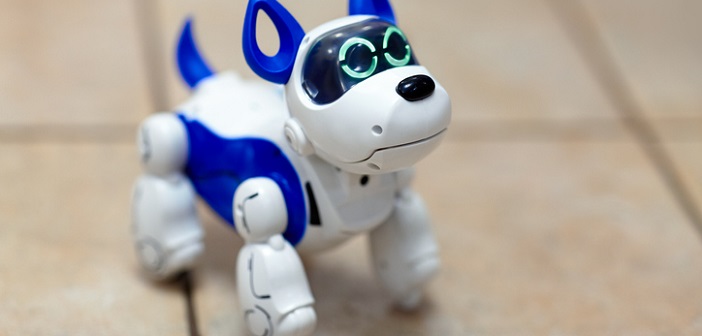It is finally time to realise the “future” that we see in sci-fi movies and cartoons? Is it time that we start playing with robotic pets? UNSW is optimistic.
Social robotic researchers from UNSW are optimistic about the benefits of having a robotic four-legged friend. It could be useful for someone who wants a companion but isn’t in a suitable living situation or can’t get an actual dog for a number of reasons.
“Robotic pets can be low maintenance, sterile, hypoallergenic and cannot catch or pass on disease. They work for those who would like a companion, but cannot be in contact with a live animal, or cannot care for one,” UNSW Built Environment human-machine interaction lecturer Belinda Dunstan says.
Belinda says while it might sound unusual, it’s actually normal to care for a range of objects, citing the fact that 80% of Roomba vacuum cleaner owners have a name for it.
“It’s quite natural for us to form attachments to embodied objects, and particularly ones that exhibit some sense of sentience,” she says.
“We have a spectrum of care-based relationships and connections: friends, lovers, pets, colleagues, neighbours, houseplants – people even name their sourdough yeast starters. I see robotic pets as fitting into that spectrum and just being another avenue for humans to exhibit care and connection.”
One of the most effective uses of robotic companion pets so far has been in assisted living environments. In scenarios where it’s unsuitable to have real pets, robotic pets can be highly effective companions, such as PARO, an interactive robotic seal, used for animal therapy with dementia patients.
“PARO is successful because there’s a very clear use case for dementia patients who can’t have a real animal in that space,” UNSW Art and Design assistive technology lead at the creative robotics lab Scott Brown says.
“It plays well into the limited complexity of robots compared with an animal, so somebody with dementia can cope with it.”
Robotic pets could also be beneficial for those with anxiety around animals. Scott says a robotic companion animal could be used to help overcome fears about interacting with a real dog: “Interacting with a robot dog first could translate to people being more comfortable around real dogs. It wouldn’t be too dissimilar to what we’re doing with Kaspar, using it as a surrogate for the real-world experience for children with autism…it doesn’t replace interaction, but it would be a stepping stone.”
However, Scott says we shouldn’t expect robotic pets to replace the real thing anytime soon. In addition to being quite expensive, consumer robotics lack the ability to replicate an animal comprehensively.
“The perception of what a robot can actually do, at this point, is far beyond what robots are able to do,” he says.
“I wouldn’t expect in the next five years that we will see the robots that can replicate enough of an animal that it will be a case of one or the other.”





